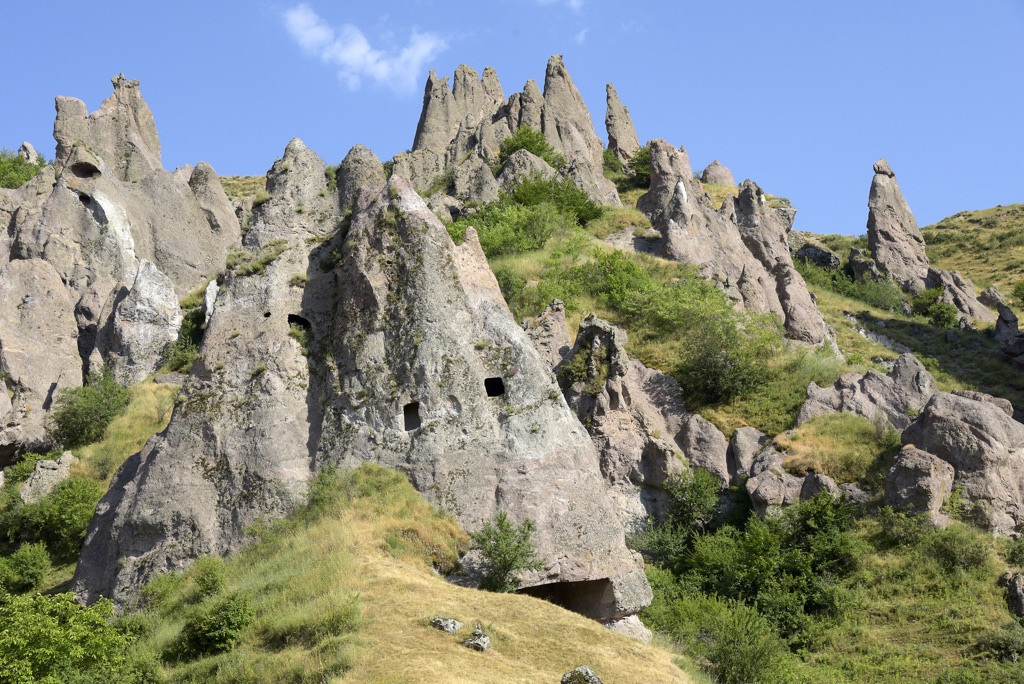Summary
Introduction to Goris Cave Dwellings
Discover the Medieval Goris Cave Dwellings, a hidden gem of ancient architecture. Nestled in the South Caucasus, these wonderful formations are a testament to human ingenuity. The caves were hand-carved from the soft volcanic rock. They tell stories of past civilizations. Goris Cave Dwellings are a crucial part of Armenia’s cultural heritage. They also offer fascinating insights into medieval life. These dwellings boast a network of rooms, stables and areas for worship. They have been preserved over the centuries. Thus, they are a must-visit for history enthusiasts and travellers alike.
Get your dose of History via Email
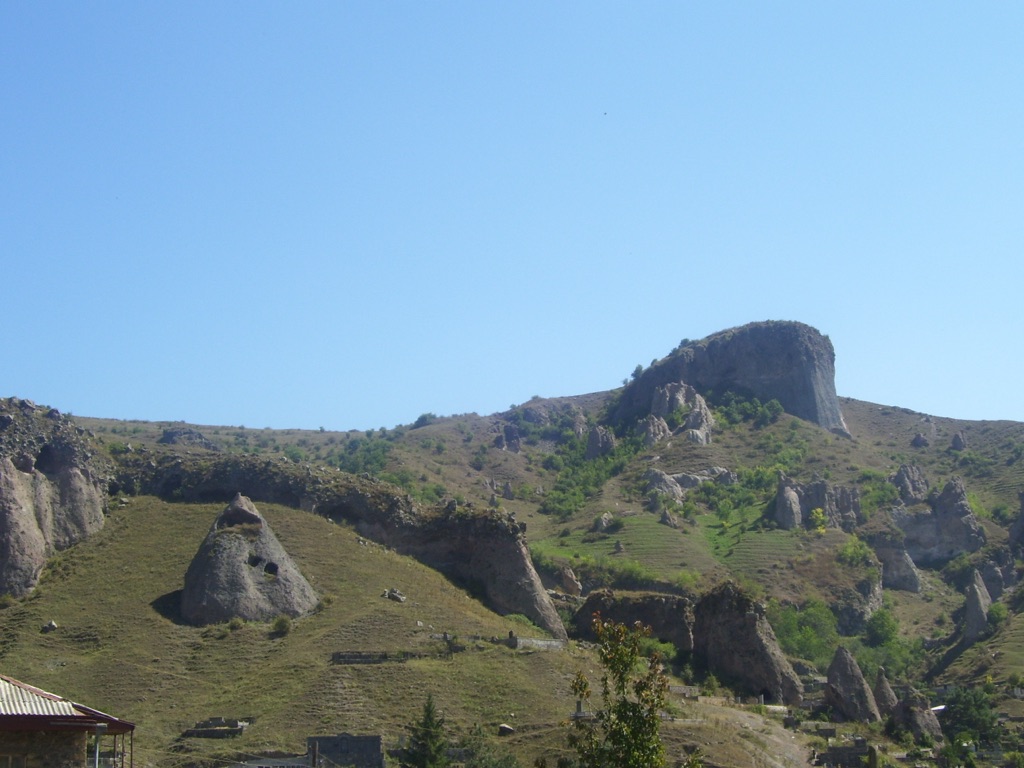
Historical Significance
The Medieval Goris Cave Dwellings span back to the 4th century. They showcase the evolution of early Christian and medieval Armenian society. The cave complex served various purposes over time. It was a fortress, a monastery, and a residential area. These caves give a unique view into past defensive strategies and spiritual practices. Innovatively designed to retain heat during winters and stay cool in summers, they demonstrate the advanced understanding of climate and architecture at the time. The site reflects the blend of man’s resilience and nature’s offerings, symbolizing a harmonious existence.
Modern-Day Appreciation and Preservation
Today, the Goris Cave Dwellings are not only historical artifacts but also a source of local pride and tourism. Efforts to preserve them have increased their appeal. Visitors can explore the caves and sense the lives of those who once resided there. This experience stirs a deep appreciation for the skills and resourcefulness of medieval Armenian cave-dwellers. As travelers stand amidst these ancient abodes, they are moved by the silent strength of the Goris Dwellings. They continue to watch history unfold against Armenia’s dramatic landscape.
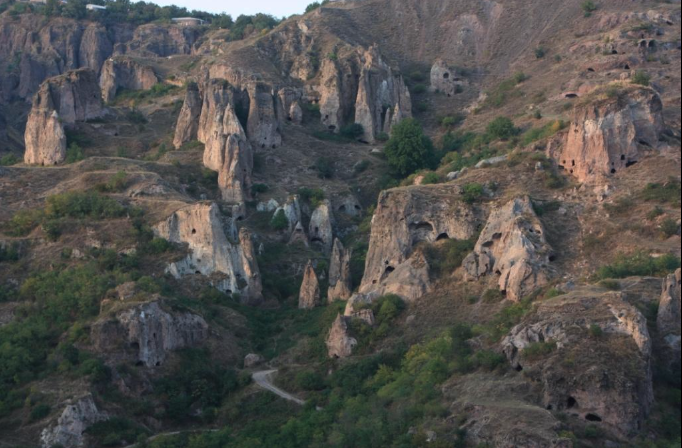
Historical Background of Medieval Goris Cave Dwellings
The Origins of Goris Cave Dwellings
Set in the rocky landscape of Armenia, the Medieval Goris Cave Dwellings go back to ancient times. Originating in the 4th century, these caves were the result of humans sculpting their homes directly into the tufa rock. Early inhabitants sought shelter, safety, and a space for spiritual practice. Over time, they created an extensive network of dwellings. These included living quarters, communal areas, and places of worship. The organic design of these caves blends seamlessly with the surroundings, mirroring the human-nature relationship that was central to medieval societies.
Spread and Evolution of the Dwellings
As centuries progressed, the Goris Cave Dwellings expanded to form a complex settlement. The local communities were involved in this growth. They infused the caves with innovations for comfortable living. Designed ingeniously, the caves could stay warm during the harsh winters and cool during scorching summers. They were also strategically positioned for defense against invasions, with hidden passageways and lookout points. Over time, successive generations adapted the dwellings to their shifting needs, demonstrating the dynamism of Armenian medieval architecture.
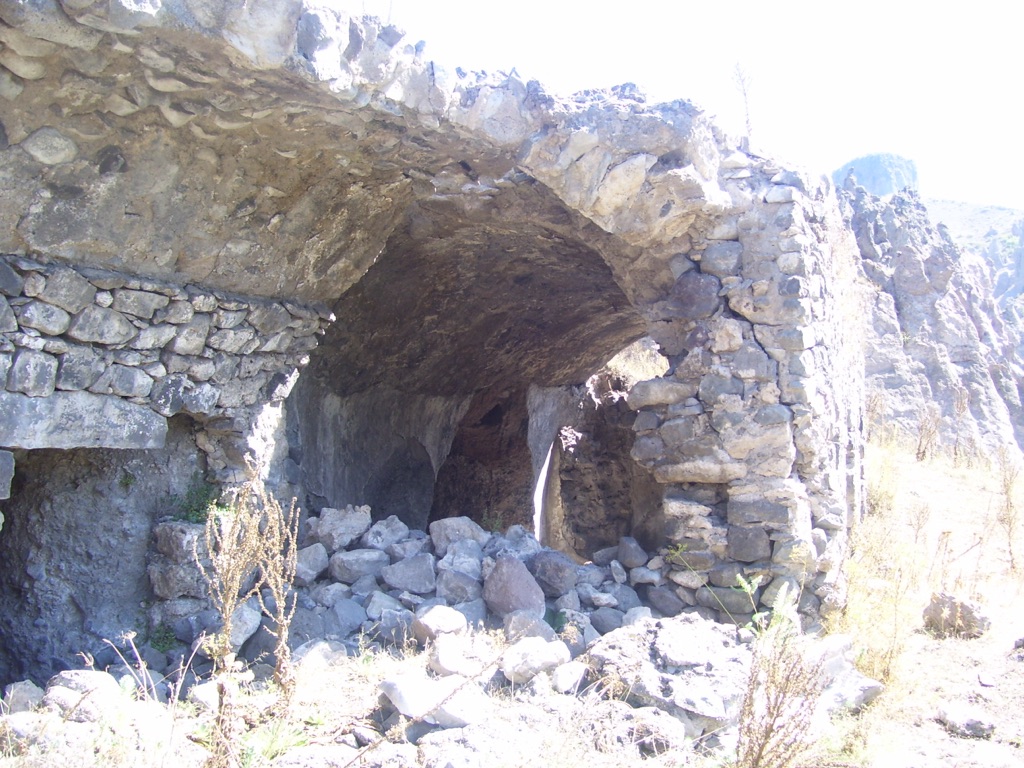
Role in Medieval Armenian Society
The Goris Cave Dwellings played a critical role in medieval Armenian life. Besides being secure homes, they served a spiritual purpose. Monastic communities flourished within these dwellings. Monks and hermits sought solitude and divine connection within the caves’ churches and chapels. The cave sites also became early educational hubs. Here, scribes and scholars preserved ancient manuscripts and religious texts. The dwellings thus became a cradle for Armenian cultural and religious development throughout the Middle Ages.
During times of war and unrest, the Goris Cave Dwellings offered sanctuary. Their fortitude withstood the ravages of time and human conflict. The caves served as fortified strongholds that protected their inhabitants. Moreover, they stored provisions and valuables in concealed chambers. These protective measures are a testament to the foresight of the medieval Armenian people. Their legacy of resilience still echoes through the silent chambers of the dwellings.
Today, the significance of the Goris Cave Dwellings remains undisputed. As a site of historical and cultural importance, it attracts visitors from around the world. Preservation efforts ensure the survival of these remarkable structures. Moreover, they maintain them for future generations to appreciate. As one walks through the caves, there is a palpable sense of stepping back into a bygone era. It is a powerful reminder of the endurance of human creativity and adaptability, set against the backdrop of Armenia’s rich history.
The Discovery of Medieval Goris Cave Dwellings
Early Findings and Acknowledgment
The exact circumstances of how the Medieval Goris Cave Dwellings were first discovered remain obscured by time. Nevertheless, the existence of these millennia-old structures came to wider recognition in the early 20th century. Local inhabitants of Goris had always been aware of the caves. However, they were just part of the landscape. It was not until archaeologists took interest that the historical value of the dwellings was understood and shared broadly.
Archaeological Excavations
Systematic archaeological studies began in earnest in the latter half of the 20th century. These explorations unearthed tools and artifacts within the caves. This indicated the presence of ancient Armenian communities. The digs were painstaking. They were led by teams of expert archaeologists who carefully uncovered layers of Goris’ past. They documented the dwellings’ extensive networks and their varied uses over centuries.
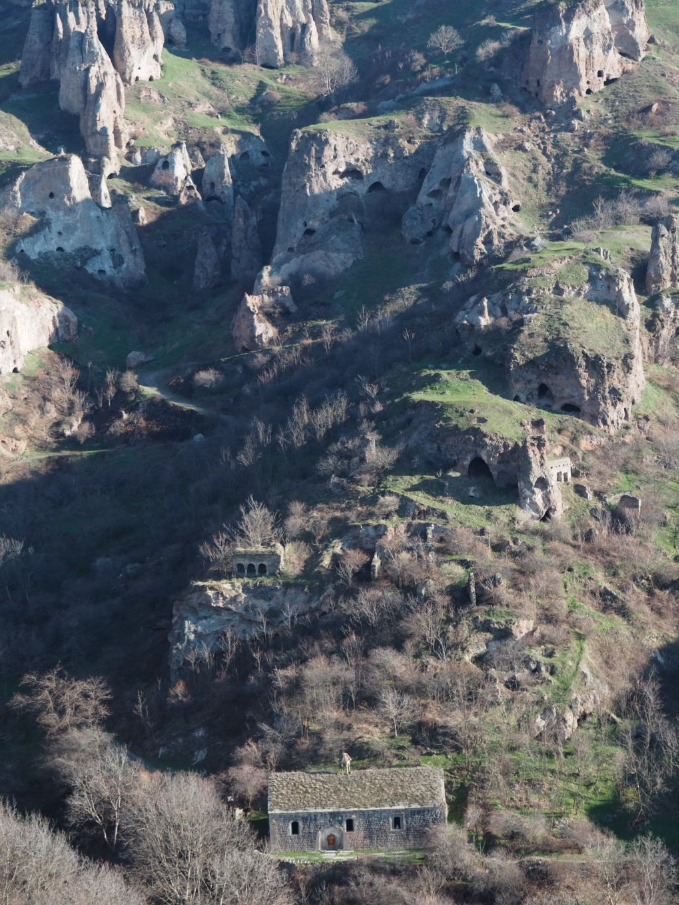
Roles of the Cave Dwellings
As archaeologists worked, they began to piece together the multifaceted roles of the cave dwellings. These ranged from residential to religious and defensive purposes. The discovery of inscriptions, religious iconography, and strategic architectural features shed light on the caves’ significance. These findings painted a vivid picture of a society advanced in thought and craftsmanship.
Subsequent research has dated the most ancient parts of the dwellings back to the 4th century. This aligns with the adoption of Christianity in Armenia. The discovery of early Christian symbols and artefacts in the cave chapels supports this dating. The findings attest to the spiritual and historical importance of the site.
Today, the Goris Cave Dwellings are recognized as a vital part of Armenian heritage. The site continues to yield new findings and insights. It informs not only the local cultural narrative but also adds to the broader understanding of human history. The perseverance of explorers and archaeologists ensures that the legacy of the caves is not forgotten. Instead, it gains richer context and deeper appreciation with each passing year.
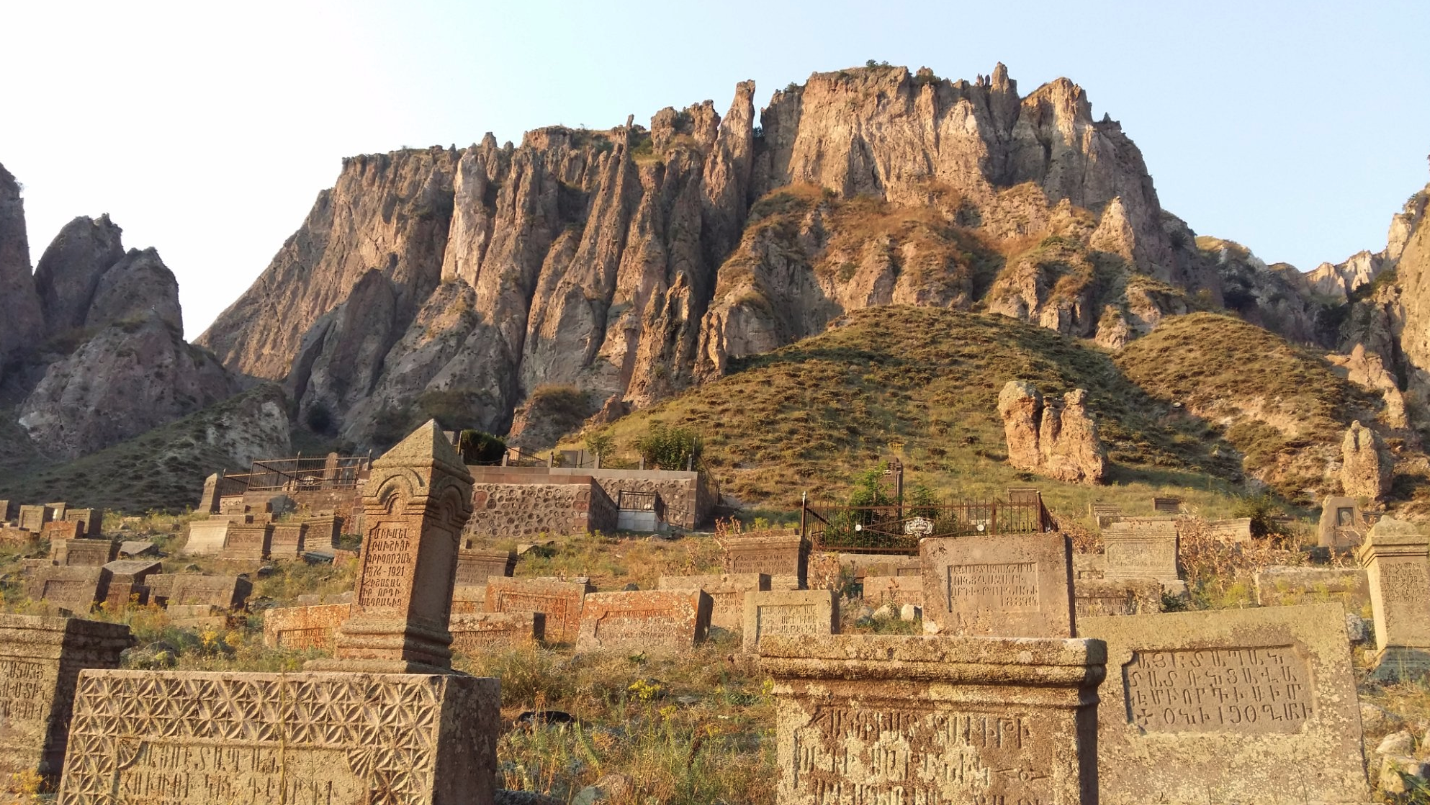
Cultural Significance, Dating Methods, Theories and Interpretations
The Heart of Armenian Heritage
The Medieval Goris Cave Dwellings stand as an emblem of Armenia’s rich cultural tapestry. They have provided key insights into the country’s medieval period. Rooted in ancient Christian traditions, the dwellings underscore Armenia’s role as an early adopter of Christianity. Scholars have identified the cave chapels as significant sites for the spread of the religion in the region. This deep cultural significance underpins the site’s importance in understanding Armeno-Christian development and heritage.
Unlocking the Past: Dating the Dwellings
Experts have employed a range of dating methods to ascertain the age of the Goris Cave Dwellings. One of the main techniques is dendrochronology. It is the study of tree ring growth patterns found in timbers from the dwellings. Archaeologists have also analyzed pottery shards and carbon-dated organic remains. These methods have helped pinpoint the establishment and use of the dwellings. They range from as early as the 4th century to the 17th century. These accurate datings provide a timeline for researchers. This helps them track the evolution of the site’s architecture and usage.
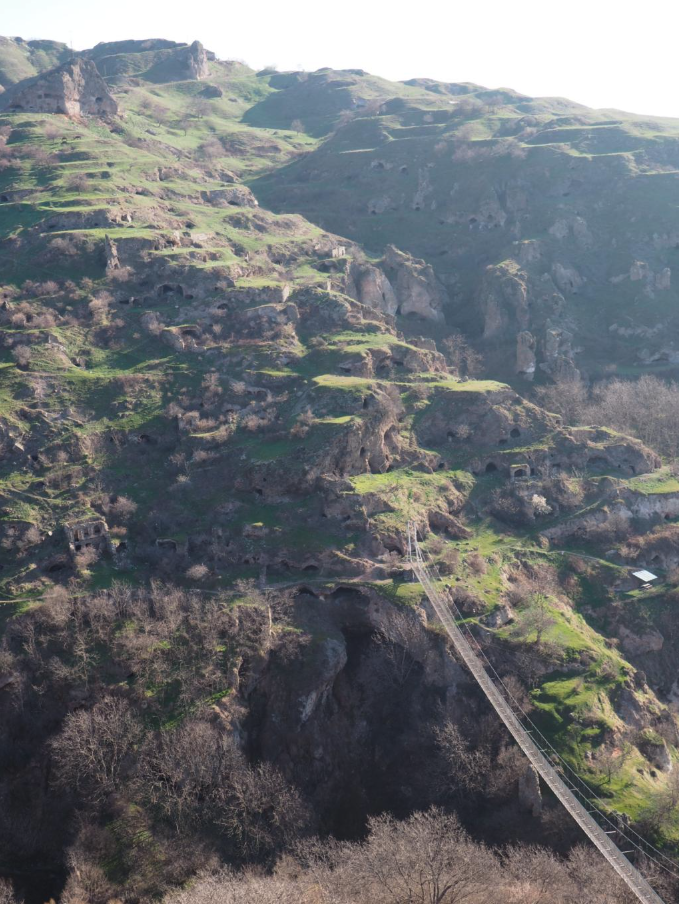
Theories Around the Use of Caves
Various theories have emerged about how the dwellings were used throughout history. The presence of communal areas and individual rooms suggests a societal structure with shared spaces for work and worship. Some theories propose that these layouts reflect a concerted effort towards defense. Others see them as proof of a cohesive community with a high regard for collective living and religious practices. Though many theories abound, the consensus is that these dwellings were multifunctional. They were at the heart of day-to-day life in medieval Goris.
Interpretations of the cave dwellings’ construction techniques have evolved over time. Initially, researchers believed the caves were merely pragmatic. They were shelter solutions in a rocky terrain. Now, studies suggest deliberate architectural planning. It aimed to harness the natural landscape for effective living conditions. The recurring geometric designs imply an aesthetic purpose as well. This highlights the ancient Armenians’ dual focus on utility and beauty.
The interpretations of the Goris Cave Dwellings continue to develop. New discoveries constantly reshape our understanding of the site. Every piece of unearthed pottery, every carved inscription adds nuance to the dwellings’ story. As a living testament to a bygone era, the Medieval Goris Cave Dwellings serve as a cultural beacon. They attract scholars and enthusiasts eager to delve into Armenia’s storied past. The site remains ripe for exploration. It presents a window into ancient lives played out within its rock-hewn chambers.
Conclusion and Sources
In summary, the Medieval Goris Cave Dwellings are an astonishing reflection of Armenia’s heritage. They captivate historians, archaeologists, and tourists alike. With their network of intricate architecture carved into the rock, the dwellings provide a unique look into the lives of the medieval Armenian people. Their longevity and sustainable features continue to impress and inspire. As a cultural and historical site, Goris Cave Dwellings stand as a powerful reminder of human resilience and ingenuity. The importance of continued preservation efforts cannot be overstated. This will ensure that these silent, stone-sculpted guardians of history can share their story for generations to come.
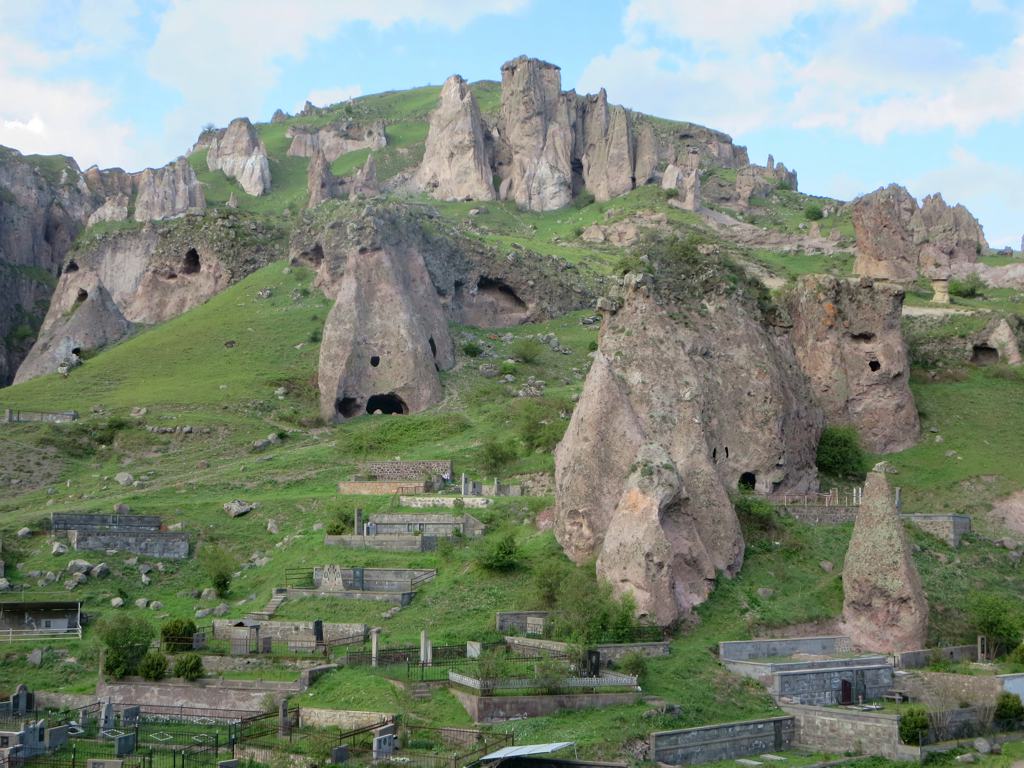
For further reading and to validate the information presented in this article, the following sources are recommended:
Or you can check any of these reputable archaeological and historical texts:
Ghazaryan, K., & Avagyan, A. (2017). ‘Armenia’s Hidden Gem: The Goris Cave Complex’, Journal of Historical Studies, 5(30), pp.45-59.
Hakobyan, T. (2015). ‘Dwellings of the Past: A Study of Medieval Armenian Architecture’, Yerevan: Ani Press.
Petrosyan, L., & Karapetyan, P. (2013). ‘The Monastic Traditions of Medieval Armenia’, Armenian Historical Review, 2(4), pp.88-108.
Sinanyan, S. (2019). ‘Rock-hewn Miracle: Investigation of Goris Cave Settlements’, Proceedings of the Armenian Archaeological Society, 14(2), pp.201-217.
Zakaryan, S. (2014). ‘Cave Architecture in Medieval Armenia’, Architectural Science, 56(3), pp.25-37.

